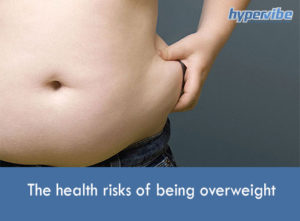Types of Sugar and Their Health Effects

Sugar comes in many forms and is hidden in lots of products otherwise considered healthy. Fruits are the classical example of food that contains sugar but is recommended for daily consumption, and milk is another item on this list. Although the sugar content of milk is lower, it shouldn’t be neglected if you’re trying to keep the intake at a minimum or you’re on a low-carb diet.
Although some types of sugar have a less significant impact on the blood glucose levels, they still shouldn’t be consumed in too large amounts, as there’s one principle that’s true for all these forms: unused sugar is stored by the human body in the adipose tissues, making us fat.
According to the 2011-12 National Nutrition and Physical Activity Survey (NNPAS), Aussies take 20% of their daily energy from sugars, and another 24% from starch, carbs contributing 44% to the daily energy intake. The major sources of sugar in one’s diet are fruits (16%), soft drinks (9.7%), dairy milk (8.1%) and fruit and veggie juices (7.5%). Sugar, syrups and honey represent just 6.5% of the total intake, and cakes and other desserts contribute 5.8% to the total sugar consumption.
Are all these sugars created equal? Some would say they aren’t, as there are chemical differences and the effects on the organism are slightly different as well.
Different types of sugar and their effects on blood glucose levels
Sucrose for example comes from sugar beets or sugar cane, and is formed of glucose and fructose.
Fructose doesn’t affect the blood glucose levels immediately, so it’s considered a low glycemic index sugar, while glucose is the one that impacts the blood sugar levels the most, being the foundation of the glycemic index (GI). Sucrose (scientific name of table sugar), thanks to its composition (50% glucose, 50% fructose), has a glycemic index of 60, which is considered moderate.
Glucose is transported to cells by insulin and is used for energy production, being easy to break down and to absorb. This is a good thing when one needs an immediate dose of extra energy for fueling an intense workout for example, but when the glucose is not unused, it gets stored as fat.
Fructose, unlike glucose, is transported to the liver, so it doesn’t get stored as fat directly. However, this doesn’t make it healthier: the liver converts fructose to triglycerides, which are fat molecules traveling through the blood stream. Too high levels of triglycerides increase the risk of heart disease, and are eventually stored in the fat cells, increasing their size and contributing to fat gain and weight gain consequently.
Moreover, the excess triglycerides seem to affect the sensitivity to insulin as well, increasing the risk of diabetes. Some studies suggest that elevated levels of these molecules interfere with the abruption of minerals, weakening the immune system in the long run.
Until a few years ago, fructose was considered the “healthy” sugar, due to its natural occurrence in fruits and vegetables, but fruits contain low concentrations of fructose, so it’s definitely not the same if you eat a piece of “diet chocolate” made with fructose, or an apple that provides the same form of sugar.
Besides fructose and glucose, there are other types of sugar that are often found in natural and processed foods as well: galactose for example is found in dairy products and milk; lactose is the main form of sugar found in milk and is made of galactose and glucose; maltose is found in barley.
Lactose gives about 40% of milk’s calories, and is broken down to glucose and galactose inside the human body, so it does impact the blood sugar levels, but given that the organism has to split up this sugar into its components, the absorption is slower than in case of glucose for example. The glycemic index of lactose is therefore lower than the GI of glucose.
Of all these forms of sugar, glucose remains the most threatening one, but the others shouldn’t be neglected either, as regardless of their name, they still add extra calories to our diets and can impact the blood sugar levels, leading to an increased risk of diabetes and weight gain.
Have something to add to this article? Feel free to post your comment below, or join our Facebook community and share your thoughts with us!
















